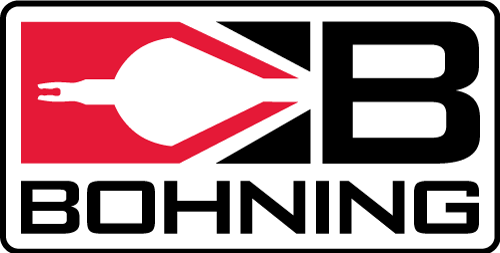Larry Griffith
CEO, Bohning Company LLC
The dilemma
If you are like most companies, cash and profits are always a concern. Even the wealthiest firm works hard to minimize costs. Mention anti-counterfeiting to a company’s leadership and most turn pale. Too many fail to understand the true cost. Lost reputations, multi-year marketing and sales programs shot to pieces, all because a company chooses to ignore the impact of counterfeit product flooding their markets and using their name or trademarks. This was our dilemma a few short years ago.
Fighting crime is expensive. Prior to addressing counterfeit products, our small company incurred legal bills totaling $5,000 a year for several years. Legal costs ballooned to over $200,000 per year as we established intellectual property protection.
Finding excellent international intellectual property (IP) lawyers takes time. Associated costs for defending and enforcing IP—including the governmental organizations legal counsel deals with on a client’s behalf—are not cheap.
Our company’s biggest counterfeit threat was from companies located in China. Fortunately, we found a law firm based in Beijing whose practice includes Chinese IP. Like the US, China’s laws necessitate a local law firm’s knowledge to navigate the complexity of their legal system. In conjunction with a US based law firm, also very knowledgeable about international IP, we were able to coordinate the implementation of the first steps for IP protection worldwide.
It was money we could ill afford to spend but we felt we had no choice as counterfeiters were impacting our top and bottom lines. In the midst of this complex battle, we did not see a cost-effective solution. In hindsight, there was one we missed—one that would have been far simpler and easier to implement.
Who we are & our IP protection path
Our company makes products for the archery industry: Bows and arrows, or in our case, components for them. Our multiple consumer brands are recognized as providing 75 years of high-quality craftsmanship and the best of customer service in our industry. Our products are literally sold in almost every country in the world.
When we began this journey into international IP protection and fighting counterfeiters (they are criminals, not “bad actors”), we knew almost nothing. We decided we needed Chinese trademark protection for our major consumer brands. To close further IP gaps, we also sought trademark protection in those countries functioning as waystations to our primary markets in North America and Europe.
The process was time consuming and expensive.

What we did not recognize until well into the process was the option of having a single, universal brand logo we could apply to our entire line. Eventually, we used the following logo applying it to products and packaging:
Our Chinese attorneys did a quick search to determine if anyone in China had trademarked this logo since it had been on our packaging for a while, e.g. trademark pirates. (Previously we had this trademarked in the USA and through the Madrid System). We obtained the Chinese trademark approximately 13 months after filing.
If we had done this initially, our cash outflow for legal items would likely have been far less than the $200,000 we spent. We suspect it would have been an easy and inexpensive means to obtain IP protection for a multitude of our products, allowing us to enforce our IP rights while giving us time to consider our next steps using the knowledge we gained every day. However, anti-counterfeiting is a complex action with many considerations.
Additional steps a company needs to keep in mind:
- Do your best to trademark your name, especially in countries where it is most likely counterfeiters will produce knock-off products or sell counterfeit goods. This should be in both your primary language and the local language using the Roman alphabet and the local language alphabet.
- Understand that just because a country signs the Madrid or Paris Conventions (concerning trademarks and patents respectively) does not mean your company has enforceable rights. To enforce IP in several countries, companies must obtain registered trademark or patent documentation issued by the national government.
- Once the IP protection is received, enforce it. Depending on the country, use local authorities and your local lawyers to seize counterfeit goods. Participate in police actions as an expert witness. Seek to prevent destruction of the counterfeiter’s supplier and customer lists and request both, following successful anti-counterfeiting enforcement for possible further action.
- Use an online monitoring service to identify, verify and remove social media, web and e-commerce sites illegally using your trademarks and or IP. They can do a far more efficient job than you can in taking down the multitude of sites selling counterfeit products.
- Incorporate security/authentication devices in your products to help you and your employees easily identify counterfeit products.
- Do not assume you will obtain assistance from national or local police authorities. Most companies are too small and must rely on their own efforts. Police forces are largely flooded with competing demands.
- Finally, consider involvement with Michigan State University A-CAPP (Center for Anti-Counterfeiting and Product Protection) and or the IACC (International AntiCounterfeiting Coalition). Both organizations are pulling together industry, law enforcement and governments to battle this criminal activity.
We hope our story provides insight and presents options to finding the financial resources necessary to safeguard brands and reputations.
THE BRAND PROTECTION PROFESSIONAL |SEPTEMBER 2021 | VOLUME 6 NUMBER 3
2021 COPYRIGHT MICHIGAN STATE UNIVERSITY BOARD OF TRUSTEES
